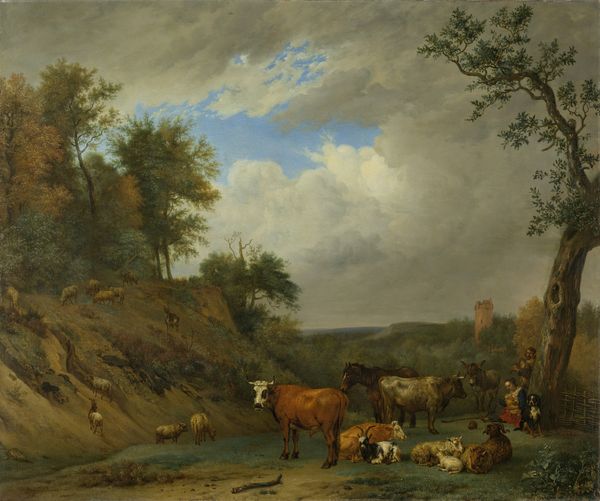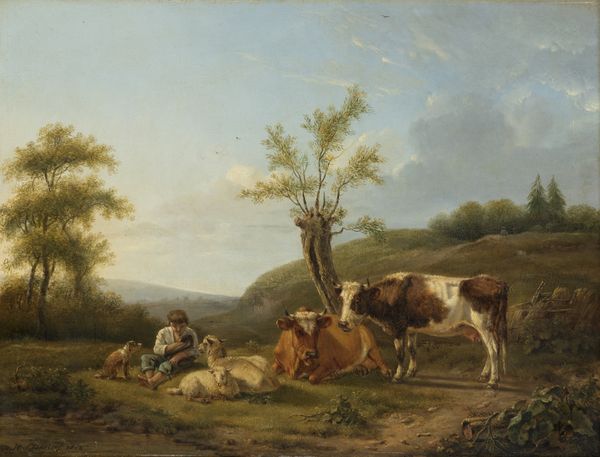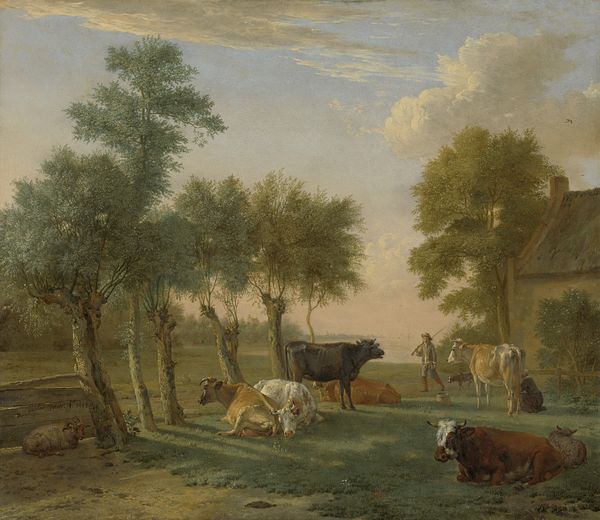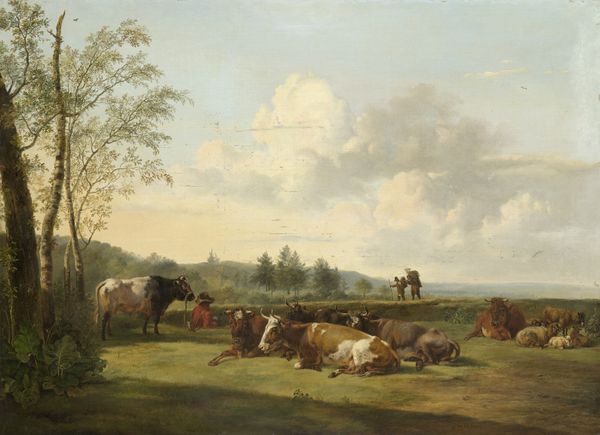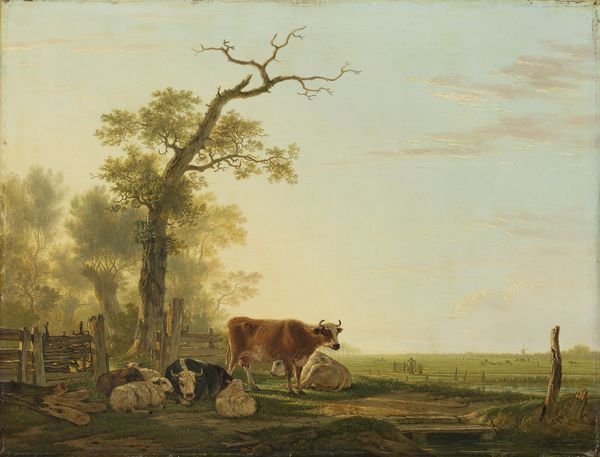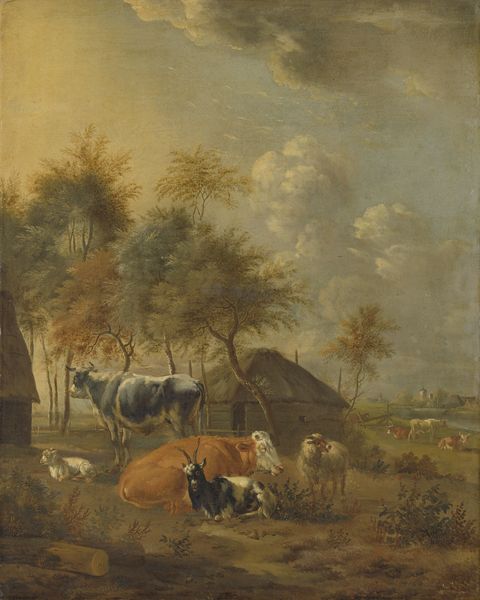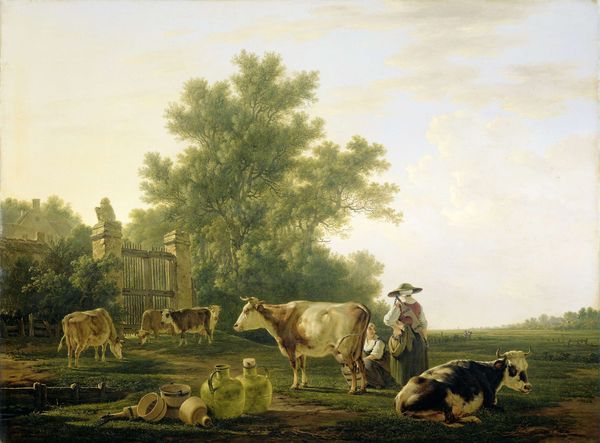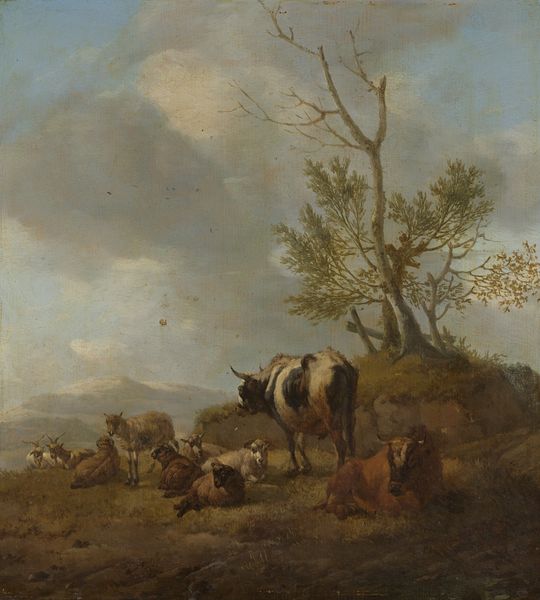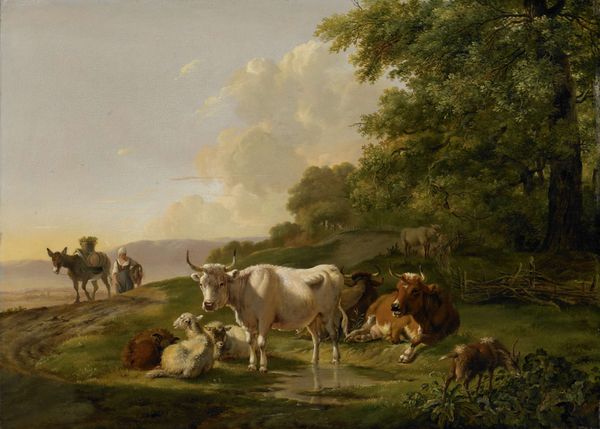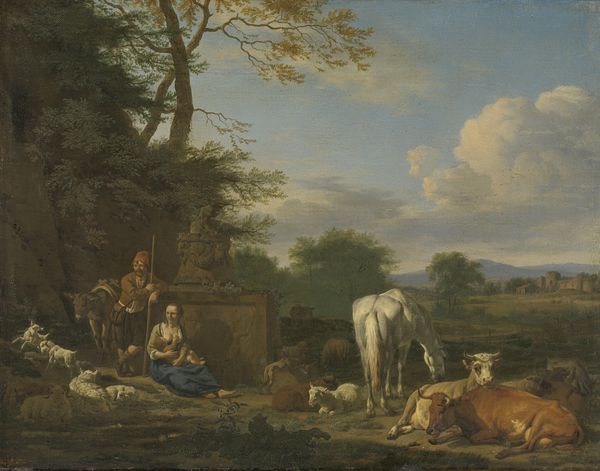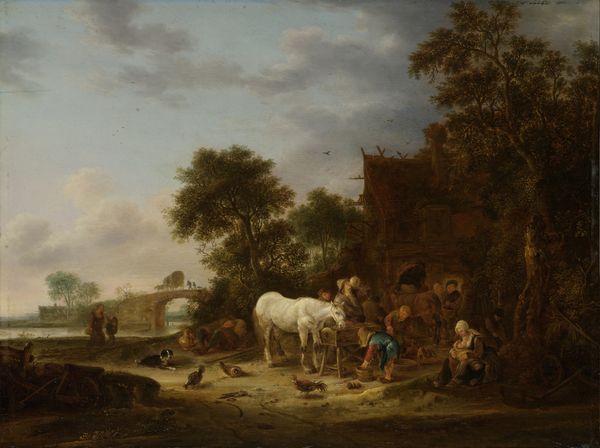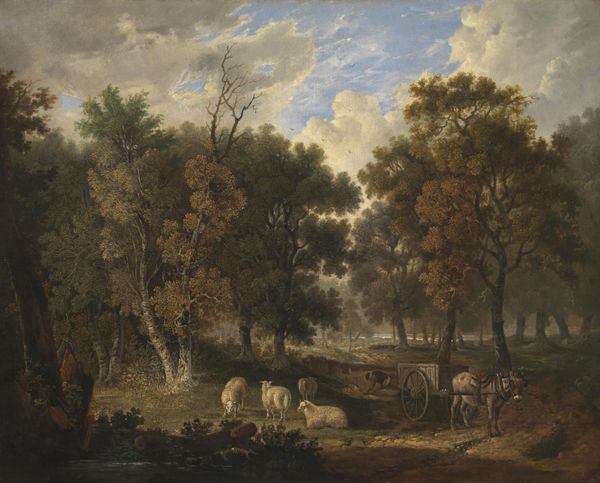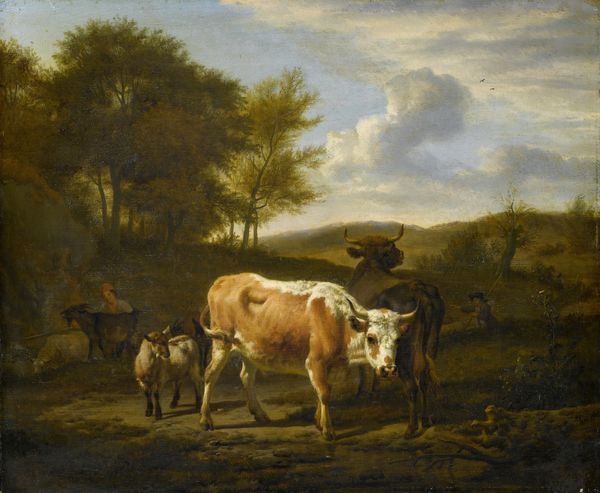
oil-paint
#
baroque
#
animal
#
dutch-golden-age
#
oil-paint
#
landscape
#
oil painting
#
genre-painting
#
watercolor
Dimensions: height 35.5 cm, width 46 cm
Copyright: Rijks Museum: Open Domain
Curator: This is Karel du Jardin’s “Landscape with Two Donkeys, Goats and Pigs,” painted around 1655, a delightful example of Dutch Golden Age painting now residing here at the Rijksmuseum. Editor: It’s so idyllic! It evokes a deep sense of peace, despite the somewhat unglamorous subject matter. What strikes me is how material this piece feels; the presence of land and labor almost seems to transcend its mere pastoral portrayal. Curator: Absolutely. You're touching on the key to appreciating du Jardin's talent: he infuses genre scenes with significant meaning. Consider the well: a shared resource implying community, the animals signifying wealth, but more subtly, different kinds of wealth: donkeys for labour, goats perhaps pointing to subsistence, while the pigs intimate a more cultivated prosperity. Editor: You read that as prosperity. I see the animals' direct relationship to sustenance, pointing to human dependence and also mastery of nature in their selective breeding and animal husbandry practices. The materiality of labor, in Du Jardin's time, must have held resonance within a landscape already transforming into a commodity itself. How aware was Du Jardin of this evolving context? Curator: Du Jardin was a careful observer of his world, drawing influences from his time in Italy as well, layering classical structures atop pastoral simplicity. This blending reflects a specific cultural yearning - an ideal that reconciles worldly comfort with classical notions of beauty. The pigs aren't just pigs, but an acknowledgment of burgeoning mercantilism, refigured in an idyllic scene. Editor: Fascinating. His application of oil paint allows such texture: the roughness of the goat's hair and hide versus the smoothness suggested in the donkeys’ posture—or is that a reading that ascribes nobility even to working animals? Perhaps he considered these details integral, revealing to a buying public the increasing mastery over their materials of survival. Curator: He certainly understood how such elements communicate more than just subject; this landscape holds deeper social textures about comfort and control in a rapidly changing economy. Editor: Thinking about the process helps unlock other readings. Curator: It's like material engagement unlocks symbol! Editor: Indeed; let’s go find our next piece.
Comments
rijksmuseum about 2 years ago
⋮
A farmer separates the wheat from the chaff, while chickens eagerly pick at the fallen grains. The raking light of the low-hanging sun evokes an early evening atmosphere. The architectural style of the cylindrical building in the distance situates the scene in Italy. Such southern pastoral and peasant idylls were Du Jardin’s speciality.
Join the conversation
Join millions of artists and users on Artera today and experience the ultimate creative platform.
